In today’s fast-paced world, it’s easy to enjoy the benefits of modern technology without thinking about the resources that make it all possible. After all, people don’t need to understand energy to have access to it—so why does energy and water education matter? Why are they so important?
Now more than ever, energy and water literacy are essential. While some parts of the world enjoy seemingly unlimited access to these resources, if we don’t use them responsibly, they could become scarce in the future. In some communities, the effects of wasteful energy practices are already visible. As energy demand increases alongside environmental challenges, understanding how to use the planet's resources wisely is crucial for building a sustainable future.
Education in these areas equips individuals and communities with the knowledge to make informed decisions that benefit both the environment and our quality of life. On August 23, 2024, CPS Energy and Itron, Inc. hosted the Smart Energy Education (SEE) Mixer to celebrate the success of the SEE Scholarship Program and honor the exceptional students who received scholarships. The event brought together students, industry leaders, and educators for a night of networking, knowledge-sharing, and celebration.
The event welcomed several esteemed VIP guests, including:
- Rudy Garza, CEO of CPS Energy
- Tom Deitrich, CEO of Itron, Inc.
- Dr. Michael E. Webber, The University of Texas at Austin
- Kimberly Britton, former CEO of EPIcenter
These industry leaders gathered to recognize the achievements of the scholarship recipients and to highlight the importance of energy and water education. The event was a testament to CPS Energy and Itron, Inc.'s commitment to fostering the next generation of professionals who will drive innovation in sustainability and energy conservation.
Networking and Professional Growth
The mixer provided students with a unique chance to network with other scholarship recipients, industry leaders, and key figures in the energy sector. Several students even secured internships during the event, marking the start of their careers in the energy field. Dr. Michael E. Webber, a VIP guest, highlighted the importance of the SEE program:
"Having access to the SEE Scholarships has helped many students across the Greater San Antonio area, and we congratulate and thank CPS Energy and Itron, Inc. for their commitment and partnership in supporting energy education. Thanks to this program, students from diverse backgrounds now have the opportunity to learn about energy, sustainability, and conservation, and will use this knowledge in their future careers to create a more resourceful world."
A Legacy of Support
Since 2016, the SEE Scholarship Program has awarded scholarships to more than 50 students, with over $800,000 in funding provided by CPS Energy and Itron, Inc. This initiative, managed by the San Antonio Area Foundation, continues to make a profound impact on the lives of students, empowering them to pursue careers in fields like energy, sustainability, and technology.
The mixer was a celebration of this ongoing success and underscored how education can serve as the foundation for a more sustainable and resourceful future.
For more inspiring stories and updates on the Smart Energy Education program, check out additional blog posts on the Smart Energy Education website!






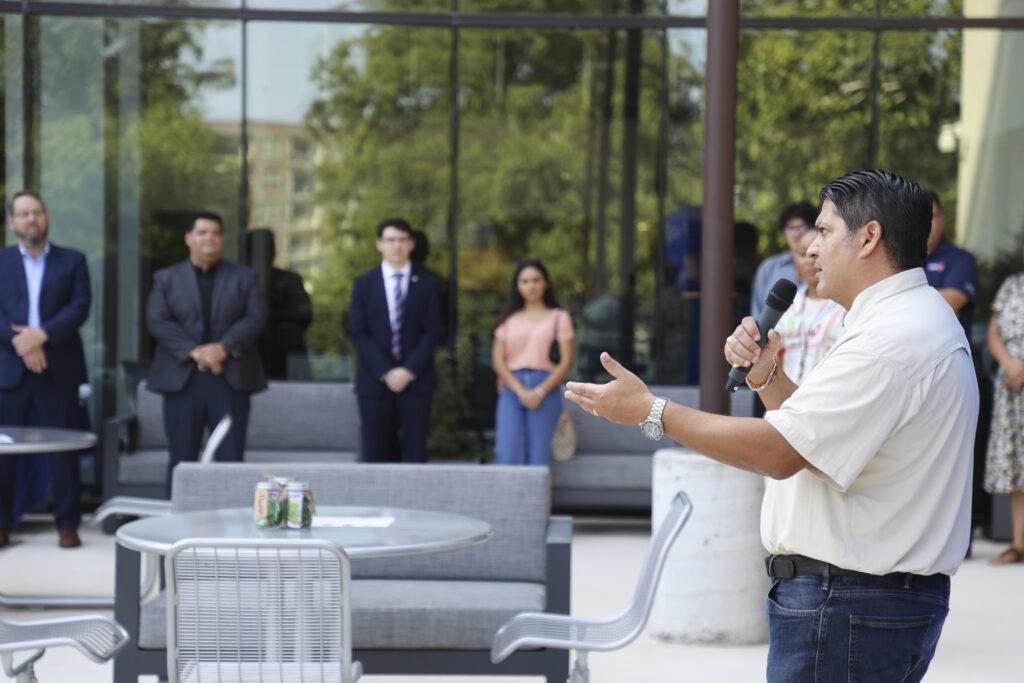




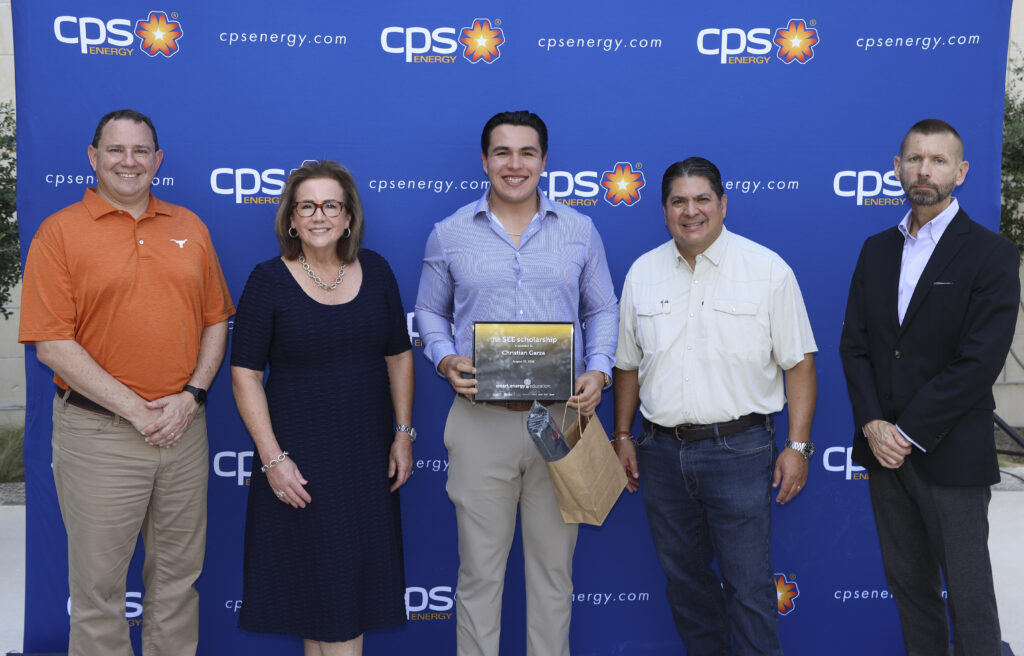

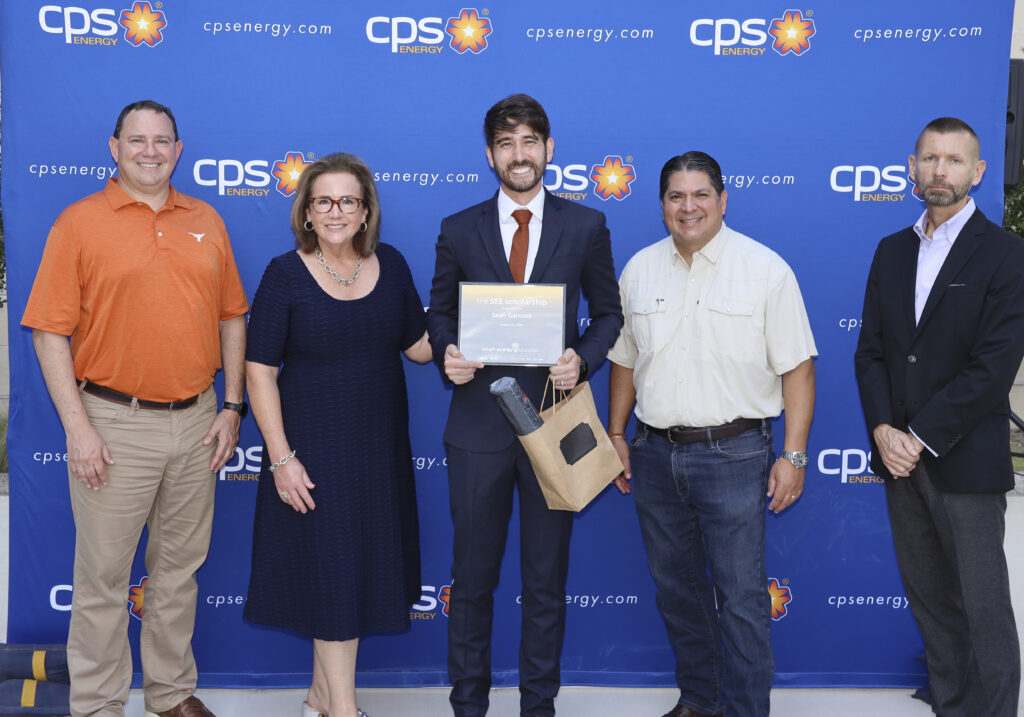
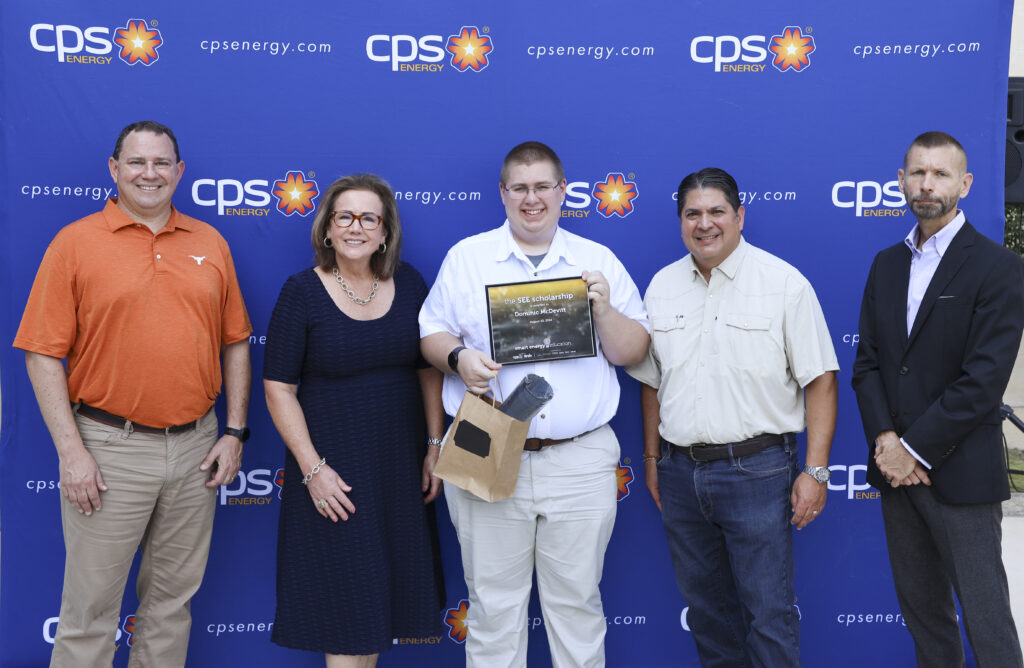
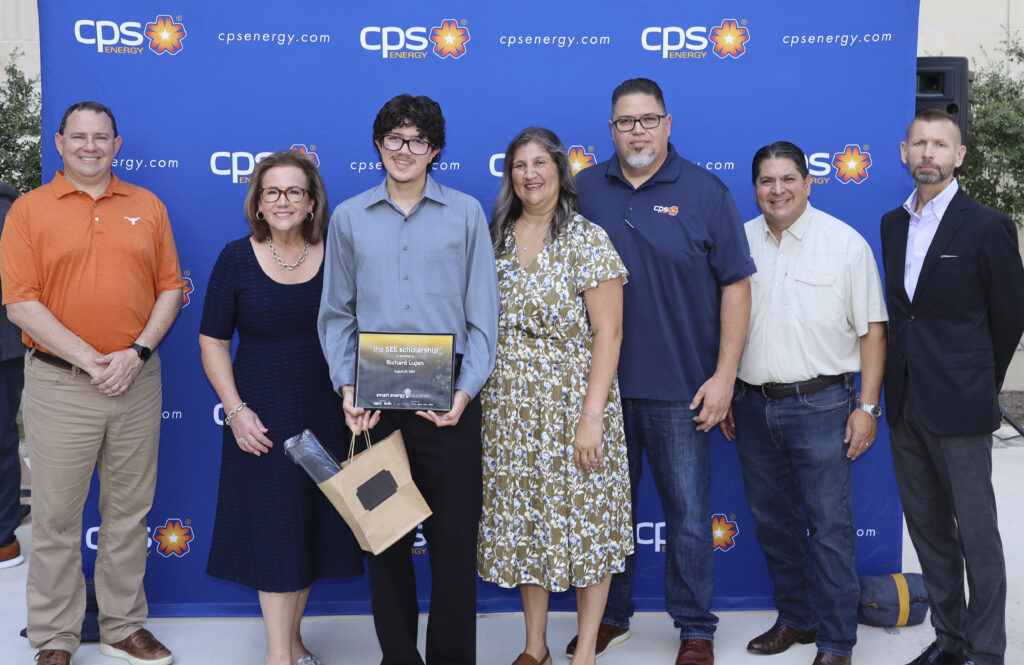
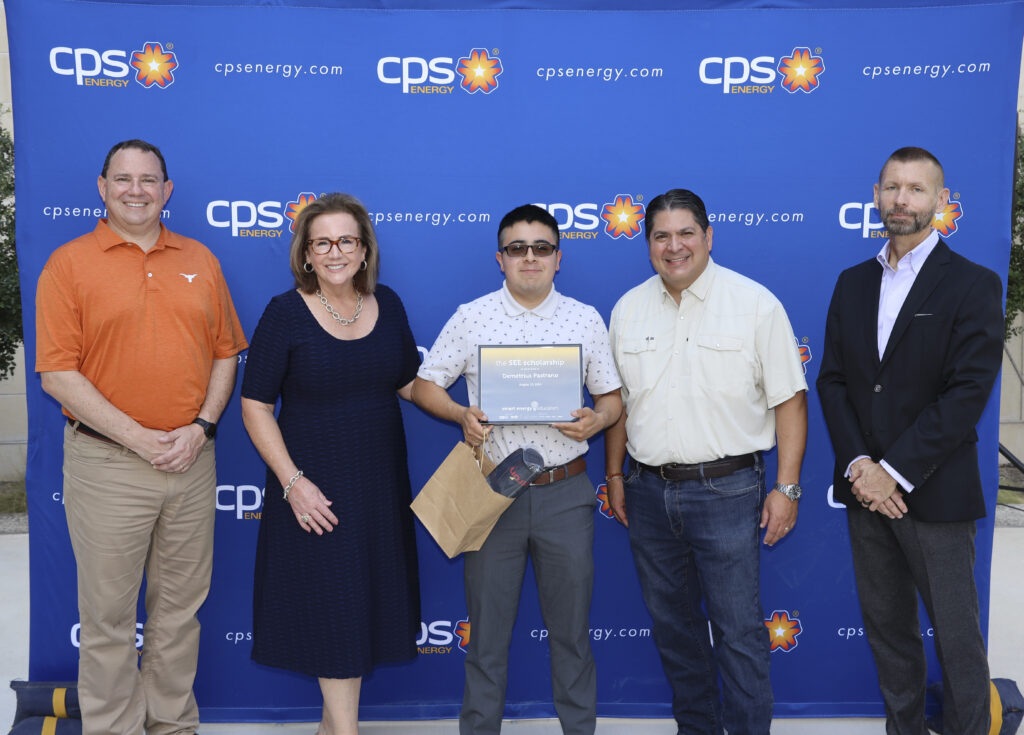
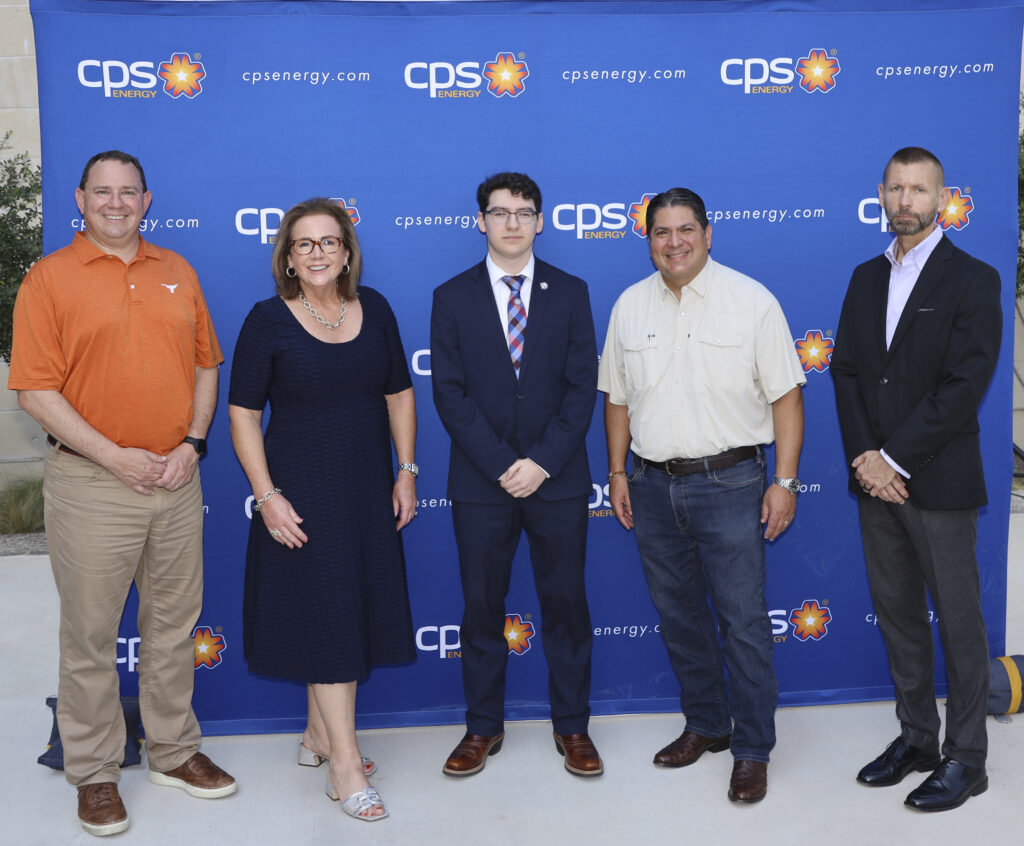
Through the rise of a digitally connected world, globalization has become a central part of our lives not only economically but socially and culturally. This can be attributed to many factors, including the rise of new technology, artificial intelligence, increased ease and opportunities to travel, and a steady surge in consumer purchasing. It's a combination that has resulted in a more connected world and, at the same time, a much more energy-intensive one. It's true that these changes can offer great advantages and opportunities to both industries and consumers alike, but what are the hidden costs associated with these shifts, and how can we mitigate the consequences they present?
As the global demand for energy continues to rise, so does our reliance on fossil fuels, leading to an increase in greenhouse gas emissions and contributing significantly to climate change. These altered weather patterns, characterized by rising temperatures, have had a profound impact on natural disasters. Shifts, including warmer oceans and rising sea levels, lead to a higher likelihood of extreme and unpredictable flooding, increased likelihood of droughts and wildfires, and, you guessed it, intensified hurricanes. These powerful tropical storms, known for their devastating impact, have increased in frequency and severity in recent years, largely due to climate change influenced by current energy consumption patterns.
Hurricane Beryl is a striking example of the evolving pattern of tropical storms. Beginning as a tropical depression on June 28, 2024, with winds at 35 mph, this storm was able to reach alarming wind speeds of 75 mph within just 24 hours. This allowed it to quickly escalate to a Category 4 hurricane by the time it made landfall on Carriacou Island on July 1, 2024, making Beryl the first Category 4 hurricane to form in June, surpassing the previous record set by Hurricane Dennis in 2005. This unprecedented intensification was driven by hot ocean temperatures and low wind shear, which provided ideal conditions for the storm's development.
Climate data can back this up by showing that sea surface temperatures in the North Atlantic in late June 2024 were notably higher than those recorded in July 2000, significantly contributing to Beryl'sBeryl's swift rise from a tropical depression to a Category 4 hurricane within 48 hours. So much so that by July 2, 2024, Beryl had become the earliest Category 5 hurricane on record in the Atlantic, with peak winds of 165 mph, exceeding the previous record of 160 mph wind speeds held by Hurricane Emily in 2005.
It's important to note that the early formation of such a powerful hurricane is unusual, as major hurricanes typically do not appear until September. This unprecedented early activity, coupled with record high sea surface temperatures and reduced wind shear, raises concerns among scientists about the rest of the hurricane season, particularly with La Niña conditions expected to develop further later in the summer.
The economic and environmental consequences of Hurricane Beryl were profound and multifaceted. In Houston, utility crews worked tirelessly to restore power to the nearly 3 million homes and businesses that endured outages amid a brutal heat wave. Additionally, Beryl caused extensive damage to communities in the Caribbean, destroying homes and infrastructure and leaving thousands in dire situations. The recovery process for these natural disasters involves ongoing efforts to restore damaged homes and improve infrastructure to better withstand future storms. Overall, Hurricane Beryl underscores the urgent need for changes in energy policies and infrastructure to mitigate climate change effects and reduce the intensity of future hurricanes.
Modern energy trends are increasingly focusing on renewable sources to combat climate change, with significant growth observed in solar and wind energy. The choices made in the energy sector are crucial for determining the future intensity and frequency of hurricanes. Persisting with current energy consumption patterns could lead to more severe and frequent storms. However, strong, enforceable energy policies and technological innovations, such as advancements in renewable energy and energy efficiency, hold promise for reducing greenhouse gas emissions and mitigating the impacts of hurricanes.
Explore Smart Energy Education to deepen your understanding of the energy sector and its profound impact on our climate. Learn how your choices and actions can drive positive change in energy consumption and sustainability. Visit our site today to access valuable resources, gain insights into the latest energy trends, and discover actionable steps to help combat climate change. Your journey towards a more sustainable future starts here!
Water is often regarded as a renewable resource, given its continuous circulation through the hydrological cycle. However, despite its seemingly endless accessibility some people have, water is not an unlimited commodity. It is true that the planet is rich with water, yet not all of it is readily accessible or clean. Freshwater, the lifeblood of communities worldwide, is the key to sustaining life and supporting ecosystems. Yet, there's a critical distinction between freshwater that exists and freshwater that is clean, potable, and readily available for human consumption. Glaciers, for instance, store a significant portion of the Earth's freshwater resources in the form of ice. However, accessing this pristine water is often challenging due to its remote locations and the substantial energy requirements for extraction. Compounding this challenge is the accelerating rate of glacier melt caused by global warming, jeopardizing a vital source of freshwater for many regions.
Water usage patterns vary significantly around the globe, with some regions exhibiting alarming levels of overconsumption. Nowhere is this more apparent than in countries like The United States and China, where water usage per capita far exceeds global averages. Factors including extensive agriculture, industrial activities, an overall lack of community resources and a growing population contribute to the strain on water resources, highlighting the urgent need for conservation measures and sustainable practices.
Taking shorter showers, turning off the lights and sealing off leaks can make a big difference when it comes to water conservation. But it’s important to keep in mind that the overconsumption of water extends beyond domestic use and permeates various sectors of industry and agriculture. From manufacturing processes to irrigation in agricultural settings, water is a critical component of production. Because of this, if left unchecked, water usage in these sectors can exacerbate the challenges of climate change and water scarcity significantly. As global temperatures rise and weather patterns become increasingly erratic, water scarcity becomes a pressing concern for communities worldwide. The interplay between overconsumption, climate change, and water scarcity underscores the need for holistic solutions that address both demand-side and supply-side factors. Everyone needs to make changes.
From a consumer perspective, solutions to water-related challenges require a multifaceted approach. Individuals can contribute to conservation efforts by adopting water-efficient practices in their daily lives, such as reducing household water usage, fixing leaks, and investing in water-saving technologies. Additionally, raising awareness about the importance of water conservation and promoting behavior change through education campaigns can foster a culture of sustainability within communities.
Addressing overuse of water is key to a sustainable future. By making some changes in our daily habits and implementing a combination of consumer-driven initiatives, we can work towards a more sustainable water future and ensure equitable access to this precious resource for all.
Are you passionate about energy conservation and eager to learn more about how you can make a difference? Take the next step in your energy education journey today! Visit The Watt Watchers of Texas for engaging activities, and Smart Energy Education for career guidance and industry insights. Together, we can create a brighter, more sustainable future!
In recent years, the landscape of career opportunities has undergone significant changes, with trade professions emerging as a cornerstone of the modern workforce. Whether you're a student exploring future career paths or a seasoned professional contemplating a career change, delving into the trades in 2024 could hold immense potential and promise.
Trade Careers in the Past Decade
Over the past ten years, new trends in the skilled trades have allowed vocational careers to ascend to new heights of demand, with qualified professions being more sought after than ever before. Thanks to government initiatives such as the Bipartisan Infrastructure Bill, the Chips and Science act, and the Inflation Reduction Act opportunities for those looking to take part in the energy sector and trade careers are projected to rise like never before. Yet despite the spike in high-paying positions, when it comes to these industries, job openings have proven to be difficult to fill.
For those unfamiliar with the complexity of maintaining a country's infrastructure, this surge in demand for labor jobs may come as a surprise. After all, its juxtaposition with the rise in accessibility to remote employment, a flourishing tech industry, and an increasing ability to do pretty much anything from the comfort of your home may seem a bit contradictory. Yet, despite their polarity, these transitions are more closely interlinked than one might imagine and can be attributed to several factors.
Firstly, an increasing demand for sustainability efforts has profoundly impacted careers in the construction and building industries. As our communities become more environmentally conscious, emphasizing green building practices to reduce environmental impact and promote energy efficiency has also become a greater priority. Consequently, the demand for trade professionals with green building certifications like LEED (Leadership in Energy and Environmental Design) has surged as businesses and organizations seek skilled workers capable of implementing sustainable solutions and meeting stringent environmental standards in construction projects. Additionally, technological advancements have ushered in an era of innovation and specialization. From smart construction techniques to renewable energy installations, trade professionals are at the forefront of shaping a more efficient and sustainable future.
Who Can Become a Trade Professional?
One of the most appealing aspects of pursuing a trade career is its inclusivity and accessibility. Unlike traditional academic pathways, trade professions welcome individuals from diverse backgrounds and experiences. Whether you're a recent high school graduate, a military veteran, or someone seeking a career change, there's a place for you in the world of skilled trades. To make things even better, professionals who take on this challenge have many paths to pick from. Trade jobs can encompass a wide range of specialties, including carpentry, plumbing, electrical work, HVAC installation, welding, and beyond. Regardless of your interests or aptitudes, there's a trade career suited to your skills and passions.
Advancements like the increase in the participation of women in construction employment over the past couple of years, which reached 10.9% in 2022 present a shift in industry norms. Yet, despite these improvements it is also important to note that only 4% represents women who work in the trades, leaving the majority as office and clerical workers. But for the initiatives mentioned above to be successful, people of all backgrounds and demographics need to be able and willing to participate in skilled trades and energy careers.
Becoming a Trade Professional
Embarking on a career in the trades begins with acquiring the necessary skills and certifications. While formal education programs and apprenticeships are common pathways to trade professions, there are multiple skill development and training avenues. Trade schools and vocational programs offer comprehensive training in specific fields, equipping students with hands-on experience and industry-recognized credentials. Apprenticeship programs can also provide valuable opportunities to learn from experienced professionals while earning a wage and gaining practical skills on the job.
By investing in lifelong learning and skill enhancement, trade professionals can ensure continued success and advancement in their careers.
Whether you're drawn to the prospect of meaningful work, competitive salaries, or the satisfaction of building and repairing the world around you, trade careers offer a fulfilling and rewarding path forward. By embracing the possibilities of trade professions in 2024 and beyond, individuals can unlock their full potential and contribute to the advancement of society as a whole.
According to the 2021 BLS, total construction employment alone is forecasted to rise from 7.03 million in 2020 to 7.28 million in 2031, for a net need of more than 25,000 workers per year. This represents an average annual construction employment growth of 3.6% per year. If you want to start your assent to a new and fulfilling career in the trades, there is no better time than now. For more information and resources regarding energy and vocational careers, visit Smart Energy Education and Upstryve today.
In today's rapidly changing world, the need for sustainability and environmental responsibility has never been more critical. What better place to build a better tomorrow than the institutions responsible for educating our future leaders? Schools have the power to inspire their students to be green ambassadors through many avenues. Thankfully, new research and technology have allowed schools to modify everything from their institution's physical infrastructure and design to their methodology to accomplish groundbreaking sustainability efforts. These new and improved educational institutions are more than just places of modern learning; they are pioneering examples of eco-friendly, energy-efficient, and sustainable infrastructure.
Sustainable schools, also known as green schools or eco-schools, are unique because they take environmental consciousness to the next level by prioritizing ecological responsibility, resource efficiency, and a commitment to teaching students about the planet. So, what does a modern-day green school look like? Keep reading to find out!
Green School Bali
Nestled amidst the lush landscapes of Bali, Indonesia, the Green School Bali stands out as one of the trailblazers for sustainable education. It's a revolutionary institution described as a "wall-less, nature-immersed campus" designed to foster sustainability and innovation through hands-on experiences and real-world solutions. Constructed almost entirely out of bamboo, this academic center considers itself a living laboratory where students are given the freedom to learn about the world through a nature-immersed experience, permaculture gardens, renewable energy sources, and an emphasis on environmental education. With additional locations already in South Africa, New Zealand, and soon Tulum, there's no stopping these green schools from leaving their footprint on the world.
Manassas Park Elementary School
In Manassas Park, Virginia, the Manassas Park Elementary School has proved that even a traditional school building can be transformed into an energy-efficient marvel. The school underwent renovations to expand its campus and increase its energy efficiency in 2009. It even received a LEED (Leadership in Energy and Environmental Design) certification, demonstrating its dedication to sustainable construction and operation. Equipped with temperature and humidity sensors that alert the students and staff when it's the optimal time to open the windows, energy-efficient lighting, solar panels, and rainwater harvesting systems, this school is designed to give all the students and staff the power to be as sustainable as possible in a building designed to make them feel connected to the natural environment.
The Green Free School in Copenhagen, Denmark
This nature-immersed school in Copenhagen, Denmark, prioritizes environmentally conscious education and has placed sustainable living at the forefront of its syllabus. Founded in 2014 by Danish filmmaker Phie Ambo and American translator Karen MacLean, this green institution runs on the principle that to inspire ecological stewardship, students must start by learning hands-on about the planet and how to exist with others in harmony. The school building itself may not be anything eye-catching, yet with a curriculum that teaches students everything from woodwork and craftsmanship to gardening and composting, these project-based learning methods are sure to bring forth a new generation of environmentally conscious, free thinkers eager to make a difference in the world.
Sustainable schools are more than just educational institutions; they are organizations committed to fostering greener, more sustainable outlooks. These schools are teaching the leaders of tomorrow not only about environmental responsibility but also how to solve real-world problems, design, build, and live in a way that helps instead of harms the planet. As we look to the future, it's clear that sustainable schools can be extremely transformative for young learners and should inspire us all to make changes to improve our education systems to better serve our communities.
Even if a school's infrastructure wasn't originally designed with sustainability in mind, there are still numerous pathways to transform it into a green school. Sustainability is not solely dependent on the physical structure of a building but can be achieved through innovative technology and behavioral changes. Schools can significantly reduce their energy consumption and environmental impact by incorporating energy-efficient appliances such as LED lighting, smart thermostats, and solar panels. Furthermore, shifts in the students, staff, and faculty's habits, such as practicing energy conservation, implementing recycling programs, and promoting sustainable transportation options, can make a substantial difference.
Regardless of a school's initial design, these efforts empower institutions to embrace sustainability, reduce their carbon footprint, and instill important values of environmental responsibility in their school. It's never too late to start! If you are interested in taking the first step towards making your school a green school, visit Watt Watchers for amazing energy-related lessons, activities, and more!
Hurricanes, also known as cyclones or typhoons, are immense weather situations characterized by powerful winds, heavy rains, and relentless storm surge flooding. Making them one of the most formidable natural phenomena on Earth. Because of these characteristics, hurricanes have traditionally been seen as a dreadful and destructive force, leaving behind nothing but a trail of devastation in its wake. After all, their ability to disrupt the supply chains, foment accidents, and destroy property has cost communities billions. Flooding, fallen trees, and wind damage individually can cause extensive losses, especially regarding power generation.
Damage to natural gas and fossil fuel facilities alone can significantly reduce electricity generation during and after a storm, leading to countless losses and accidents. Yet, hidden within the fury of these massive storms lies a potential source of renewable energy that, if harnessed responsibly, could offer a silver lining amidst the chaos. What better way to make the most of what we have than to explore the remarkable power of hurricanes and the evolving technology aimed at harnessing their energy for the betterment of our planet?
Technology and the Quest for Harnessing Hurricane Energy
In recent years, cutting-edge technology has revolutionized our ability to collect crucial data on hurricanes, enhancing our understanding and preparedness for these powerful storms. Advanced remote sensing instruments, such as hurricane-tracking satellites equipped with specialized sensors, now provide real-time imagery and atmospheric measurements. These satellites enable meteorologists to monitor a storm's development, track its path, and predict its intensity with newfound accuracy. Additionally, sophisticated unmanned aerial vehicles (UAVs), or drones, are being deployed into the heart of hurricanes, gathering critical data on wind speeds, temperature gradients, and atmospheric pressure. These technological advancements not only aid in forecasting the behavior of hurricanes but also contribute to more effective disaster response efforts, ultimately helping to safeguard vulnerable communities in the storm's path.
As far as capturing the energy potential of hurricanes goes, several innovative technologies have emerged on the horizon. One such concept involves using specially designed offshore wind turbines capable of withstanding hurricane-force winds. These turbines are anchored to the ocean floor, and aim to generate electricity through the powerful winds that drive their blades throughout a storm, providing a clean and renewable energy source to help power the city. Some researchers are even exploring the possibility of converting the temperature differential between the warm surface waters of the ocean and the cooler waters below into electricity. This concept, known as Ocean Thermal Energy Conversion (OTEC), has the potential to tap into the vast energy reservoirs present in hurricane-prone regions.
New technology can be very exciting, however, it's crucial to emphasize that the pursuit of hurricane energy as a renewable resource is not without its challenges and ethical considerations. Implementing such technologies must prioritize safety, environmental impact, and the well-being of local communities. The practicality and economic viability of these innovations are subjects of ongoing research and development. Ultimately, the best thing people who live in hurricane-prone regions can do is get involved. The planet needs more energy professionals in the field to get the job done right. Are you interested in pursuing an energy career? Visit Smart Energy Education to discover energy courses, scholarships, and more! Also, don't forget to follow us on Facebook for weekly updates on events, blogs, and other opportunities.
To learn more about the impact of natural disasters on energy infrastructure, check out the following video from PBS.
In a world full of unpredictable circumstances, there is nothing more refreshing than the consistency mother nature has to offer. We may not be able to predict the future, but in the end, we can rest assured that the sun, moon, and stars will rise and fall in their usual pattern each day and night. As will the tides. When it comes to energy, regularity is an indispensable advantage. After all, solar energy is harnessed most effectively when sunny days are guaranteed, and oil and gas are most reliable when access to fossil fuels is abundant. Unfortunately, neither case is certain.
Access to natural resources is hardly ever set in stone. With a population rising in parallel with energy demand and environmental degradation, the world is in desperate need of reliable, renewable energy resources. Governed by the moon's gravitational forces, tides represent a unique glimpse into a future where we can rely on the ceaseless and predictable movement of the oceans to generate clean electricity.
Currently, there are several methods of harnessing tidal energy, each with its own characteristics and potential economic, environmental, and social impacts. They include Tidal Stream Systems, Tidal Range Systems (including tidal barrages), and Tidal Lagoons. All three systems offer the chance to create clean energy consistently and predictably. At the same time, the underwater environment necessary for each can be challenging in terms of maintenance and installation, requiring specialized equipment. Yet, despite these similarities, each type has its own unique advantages and disadvantages.
Tidal Range Systems (Including Tidal Barrages)
Tidal range systems generate electricity through a series of dams or barriers strategically placed across tidal estuaries or coastal areas. The barrages trap seawater during high tide and release it through turbines during low tide, spinning the turbines and generating electricity in the process. Their potential to generate significant amounts of electricity makes them suitable for base-load power, and they have even been successful in providing flood protection for coastal areas.
While tidal range systems offer significant prospects for green energy production, they are also associated with expensive infrastructural costs and raise critical environmental concerns. Fish can be injured or killed when passing through turbines. At the same time, the altered water flow can affect the movement and spawning of certain species. Tidal barrages can additionally disrupt the natural transport of sediments along coastlines, reducing water quality and impacting the stability of shorelines and estuaries.
Mitigation measures like fish-friendly turbine designs are being developed to address these issues. It should be taken into account that the specific environmental impacts of tidal range systems vary depending on project design, location, and the implementation of mitigation measures. Environmental impact assessments (EIAs) and comprehensive monitoring programs are essential tools for identifying and addressing potential adverse effects, ensuring that tidal range projects are developed in an environmentally responsible manner. Thankfully, technological advances and best practices continue to evolve to mitigate and reduce these impacts, making tidal energy a more environmentally friendly option for clean energy generation.
Tidal barrages harness the ocean's energy by trapping and releasing water during tidal changes. As tides rise and fall, they spin the generator's turbines and produce electricity.
Tidal Stream Systems
A tidal stream system harnesses the kinetic energy of moving water currents caused by tidal flows. The core component of a tidal stream system is an underwater turbine, often referred to as a tidal turbine or tidal stream generator. As the tidal currents flow in and out, the moving water's kinetic energy causes the turbine blades to rotate. This rotational motion is then converted into electrical energy through a generator, similar to how wind turbines generate electricity from wind.
Tidal stream systems are advantageous because they have a relatively small environmental footprint. Unlike Tidal Range Systems, they do not require the construction of any large, ecologically damaging barriers. They can be installed in various sizes, ranging from individual turbines to arrays. This allows for more scalability and adaptability and can be advantageous when creating ecologically safe designs. Unfortunately, tidal streams must also be installed in areas with strong tidal currents to be effective, limiting deployment locations. Not to mention that these turbines may pose significant risks to marine life if not properly designed and installed.
Tidal Lagoons
Tidal lagoons are carefully designed enclosures, typically located along coastlines. Unlike open tidal stream or range systems, tidal lagoons are enclosed or partially enclosed bodies of water. They control the flow of seawater with sluice gates, allowing for precise regulation of inflow and outflow. They have even been shown to provide opportunities for tourism, aquaculture, and recreational activities.
Tidal lagoons are special due to their lower environmental impact. This is mainly because tidal lagoons can operate efficiently in areas with lower tidal flow speeds, offering flexibility in location. They also tend to have lower installation costs compared to some tidal stream systems, simplifying their deployment. However, challenges remain; suitable sites for tidal lagoons must have the right tidal conditions and geography.
Want to learn more about energy resources and the amazing energy technology and careers available today? Visit Smart Energy Education and don't forget to follow us on Facebook!
In a world, ever more attuned to the pressing need for environmentally conscious solutions, the realm of energy policy and advocacy emerges as a game changing arena of action. This exciting domain has the potential to not only shape the trajectory of energy systems—it has the power to manipulate the very fabric of our global commitment to a greener future. Curious minds and aspiring advocates of sustainable change have the power to influence progress unprecedentedly. From the halls of legislation to the heart of community engagement, this exploration will shed light on the pathways, challenges, and triumphs that define this intricate realm. So, whether you are a budding activist or a policy enthusiast, come along for the ride as we navigate the intricate routes of driving impactful change in the energy sector.
The power of policy
The environment's health is much more than a desire nature enthusiasts have at heart; it is a human right and a pillar for a flourishing community. For this reason, green advocacy should be treated as a public requirement, secured by regulation of public and private agents who pose potential ecological threats. In light of this, protective policies like pollution and contamination taxes have been around since the Industrial Revolution, which spurred the first accounts of large-scale air pollution resulting from industrial activity. These taxes and fines are meant to protect the environment and have been around since as early as the 1400s. However, the potential economic gains that can come from avoiding and reducing protective regulations have, unfortunately, also flourished as the energy industry has evolved.
Despite legal attempts to reduce natural resource degradation and limit climate change, current policies have proven to come up short time and time again. From cruises dumping waste in the ocean and having to only pay a simple fine to unchecked factories with inadequate harmful chemical disposal procedures, organizations continue to find ways to pay themselves at the expense of the environment. Consistency and the will to see past individual gains are critical for change to become a reality. Utilizing policy as a tool in the fight against climate change holds immense promise in shaping a more resilient and eco-conscious world.
Policy frameworks provide a structured approach to address complex challenges, offering guidelines and regulations that can drive significant positive changes. By enacting laws that encourage renewable energy adoption, reduce carbon emissions, and promote sustainable practices, governments can incentivize industries and individuals to align their actions with greener goals. Moreover, international cooperation through policy agreements fosters a global commitment to reducing co2 emissions and combating climate change. Effective policy implementation can steer economies towards low-carbon pathways, encourage technological innovations, and lead to more harmonious coexistence between human activities and the planet's ecological systems. In essence, policy-driven environmental sustainability efforts are uniquely impactful because they offer a strategic blueprint to mitigate climate change's impact while fostering a future of environmental harmony and shared responsibility.
Community engagement
For those of us not involved in the creation and implementation of policy and regulation, there are also steps that can be taken to lend the planet a helping hand. Community engagement serves as a catalyst for sustainable transformation and the establishment of enduring energy resource regulations. When communities actively participate in shaping energy policies and decisions, they become invested stakeholders, fostering a sense of ownership and responsibility. Through dialogue, collaboration, and education, community members gain insights into the importance of sustainable energy practices and the broader implications of resource use. This heightened awareness can drive demand for cleaner energy sources, encouraging policymakers to implement regulations that prioritize environmental well-being. Furthermore, sustained community involvement nurtures a culture of accountability, encouraging individuals to adopt energy-efficient behaviors and advocate for long-term resource management. Ultimately, community engagement not only empowers people to drive positive change but also establishes a foundation for regulatory frameworks that reflect the collective values, needs, and aspirations of a sustainable future.
At Smart Energy Education, one of the most effective ways to make a difference is through actively taking action. To access amazing, fun energy activities and lessons, visit Watt Watchers! Also, if you want to learn more about how our actions impact the planet and the amazing energy careers that can help create a brighter future, visit Smart Energy Education, and don’t forget to follow us on Facebook!
The era of rapid technological advancements and ever-increasing consumer culture is in full swing. Thanks to energy and innovation, our lives have rapidly become intertwined with smartphones, computers, cars, and other forms of personal technology. They have allowed people to access a level of convenience, comfort, and communication never before seen.
However, while new devices and appliances have facilitated the propulsion of scientific advancement to a level previously reserved only for movies and television, it is imperative that we pause to reflect on the environmental impact of our actions. People are becoming increasingly more aware of climate-related problems, and even though new efforts have led to some positive change, one of the most environmentally impactful industries is often overlooked.
Personal technology has become integral to our daily lives, revolutionizing how we communicate, work, and interact with the world around us. The ubiquitous nature of smartphones and computers has therefore opened up countless opportunities while simultaneously giving rise to new environmental concerns. Consequently, the concepts of conservation and sustainability have emerged as vital cornerstones of our global society.
Unfortunately, from extracting precious minerals for manufacturing to generating electronic waste, the life cycle of personal tech devices impacts the environment at multiple stages. Let's take a look at the ecological consequences of technology and some possible solutions to ensure we can continue enjoying our electronic devices for years to come without compromising the planet's health.
Raw Material Extraction
The manufacturing process of smartphones and computers requires a wide range of raw materials, including rare earth metals, gold, copper, and other minerals. The extraction of these materials often involves environmentally damaging practices such as open-pit mining and deforestation. Mining activities can additionally destroy habitats, increase soil erosion, and lead to water pollution, adversely affecting ecosystems and local communities.
If manufacturers can get most of the materials they need from old devices, excess mining will not be as prominent. Because of this, recycling as many materials as possible has become increasingly important. From a manufacturing perspective, looking for alternative, more sustainable materials should also be a top priority.
Manufacturing
The manufacturing process itself involves energy-intensive procedures and the use of toxic chemicals. Factories producing electronic devices emit greenhouse gasses and other pollutants into the atmosphere, contributing to climate change and air pollution. Additionally, the improper handling of hazardous substances during manufacturing can pose health risks to workers and surrounding communities.
Regulation is key when it comes to sustainable manufacturing processes. The improper disposal of toxic chemicals can lead to serious consequences and should be legally reprimanded. Staying up to date on policies and pushing community leaders to uphold safety regulations can go a long way. Additionally, refraining from purchasing products from companies known to have faulty safety procedures in their factories is important.
Energy Consumption
Smartphones and computers consume significant energy during their use, especially as data centers and cloud storage facilities support the vast amount of digital information generated. This energy demand increases reliance on fossil fuels, such as coal and natural gas, to power data centers and charge devices, exacerbating greenhouse gas emissions and climate change. There is a great need for innovative ideas that will help reduce the energy intensiveness of our devices. New initiatives coupled with a switch to renewable energy sources will be pivotal for reduced energy consumption.
Electronic Waste (e-waste)
The rapid pace of technological advancement and consumer demand for new devices lead to a constant obsolescence cycle. This means that as smartphones and computers become outdated, they are often discarded and replaced with newer models. Improper electronic waste disposal poses a serious environmental threat, as e-waste contains toxic materials like lead, mercury, and cadmium that can contaminate soil and water if not managed correctly.
End-of-Life Management
Managing the disposal and recycling of electronic devices is a complex challenge. Many old smartphones and computers end up in landfills, where toxic components can leach into the soil and water. Recycling electronic devices is essential to recover valuable materials, but the recycling process itself can be energy-intensive and may lead to pollution if not conducted properly. This further emphasizes the need for proper recycling programs as well as policies that heavily penalize the improper disposal of e-waste.
Planned Obsolescence
Some technology manufacturers intentionally design their products with planned obsolescence, meaning they have a limited lifespan or become difficult to repair or upgrade. This practice can encourage consumers to replace devices more frequently than necessary, contributing to increased electronic waste generation and unnecessary resource consumption. Increasing regulation to ensure companies are unable to continue with wasteful and environmentally damaging practices such as this one will be a huge factor in securing a sustainable future. As a consumer, demanding the ability to fix an old device instead of having to buy something new can also be very powerful.
Securing a healthy, vibrant future for the next generations means exploring ways to become more sustainable both as inventors and manufacturers. Technology is here to stay. Embracing sustainable practices has become not just a choice but a moral responsibility. As we become increasingly aware of the consequences of our actions, we are presented with a unique chance to leverage our choices for the greater good. By opting for eco-friendly devices, prolonging the life of our gadgets, and responsibly recycling electronic waste, we can significantly reduce our ecological footprint.
From understanding the environmental impact of the tech industry to learning about green innovations and adopting mindful consumption practices, this journey toward sustainability will empower us to be the change-makers our planet desperately needs. If you are interested in learning how you can make a difference in your career, visit Smart Energy Education, and don't forget to follow us on Facebook!